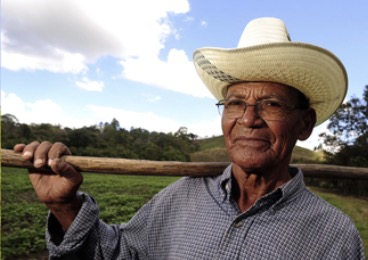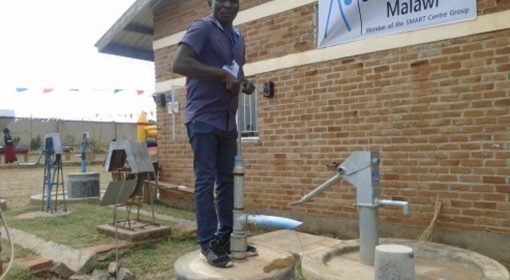Posted by Likimyelesh Nigussie
June 03, 2013
One of the big challenges in achieving global food security is ‘closing the yield gap’. There is much knowledge aIrrto get the best out of a crop in global centres of knowledge, but these techniques are not known to many farmers (especially those in remote and poor areas) and hence they are not applied. Also, the supporting inputs are often not locally available. Some estimate that if one was to close this yield gap, farm production could go up 40-50% — and this would go long way towards meeting the demand of a growing world population.
But how to close this yield gap = knowledge gap? In many countries agricultural extension services are in decline. After years of restructuring and budget cuts there is not much left of the highly organized agricultural training and visit system of the past. Also, in an urbanizing world, being an extension worker is not necessarily the most preferred career path. Fortunately, an important alternative is emerging: modern media and information communication technology (ICT).
The potential for ICT for farmers is unquestionable, as it can provides the information required to make farm decisions and improve their livelihoods. In line with this, Smart ICT can be affordable and customized to smallholder farmers that helps empowering smallholder farmers to make decisions in managing land and water resources. Using mobile phones is one of the obvious technologies suited for this purpose.
Here is some experience from a research programme supported by IFAD’s PTA program in Ethiopia. Arata Chufa town, located 177 km from Addis, in Ziway Dugda district of the Arsi Zone of the Oromia regional state in Ethiopia, is where the pilot project was carried out. Sixty smallholder farmers were selected and trained. Mobile phones with credit cards were distributed to these farmers, for the same purpose. As a season based system and a pilot programme; lessons can be shared on what has worked and what has not.
Farmers who are part of this project get two types of text message services: i) agricultural information (a comparison of the current status on biomass growth and water use efficiency of crops on a field with the status of the fields with the same crops with the same development stages), and ii) irrigation planner service (when to irrigate their fields). The fact that irrigation is widely practiced in the area and that information sent and received via their cell phones is in the local language (Oromifa) made the uptake and application of the technology easier.

Farmers also claimed that they find the technology useful as it helped them realise the importance of information communication technology, for improved farming practices. This can be revealed by the fact that after the pilot programme was over, farmers demanded the continuity of such programmes as they said their yields got better, after they started applying the technology (though further investigation might be needed to know what the share of the ICT project was. Other factors, in addition to Smart ICT, may have contributed for the increase in yield). In addition, farmers who were not part of this project also need to be part of such programmes, as they have seen its value from their friends and neighbours.
 However, application of the Smart ICT at Arata Chufa was constrained by some factors. Some of these include: slow network connection (for uploading, encoding and downloading data), inability of the system to provide information about exact problem on the plots, particularly about factors that contributed for current status on biomass growth (that urges agriculture experts to visit the fields to figure out exact problems). In addition to this, limited capacity of local staff in interpreting results of the software was also a constraint (trained experts were only able to understand and analyse only part of the results displayed by the software).
However, application of the Smart ICT at Arata Chufa was constrained by some factors. Some of these include: slow network connection (for uploading, encoding and downloading data), inability of the system to provide information about exact problem on the plots, particularly about factors that contributed for current status on biomass growth (that urges agriculture experts to visit the fields to figure out exact problems). In addition to this, limited capacity of local staff in interpreting results of the software was also a constraint (trained experts were only able to understand and analyse only part of the results displayed by the software).
It is obvious that the ICT is helpful for farmers and can provide what no other mechanism can. The promise is only getting larger as smart phone and internet coverage increases and the ‘digital divide’ is being pushed back. There is still a long way to travel – ICT can be made more useful and can best serve its purpose, with deeper understanding of existing local conditions and more local capacity development efforts.
{jcomments on}

